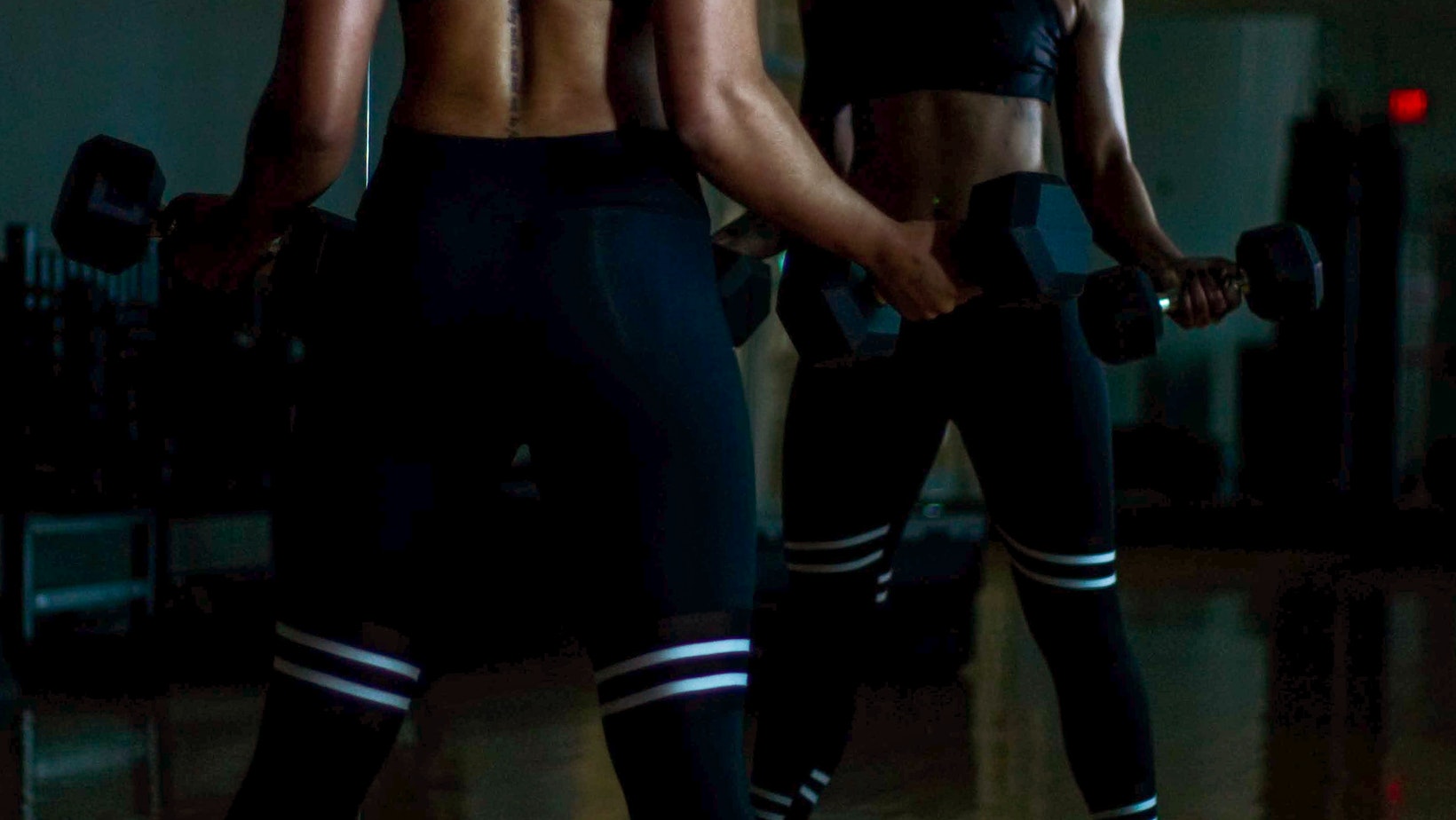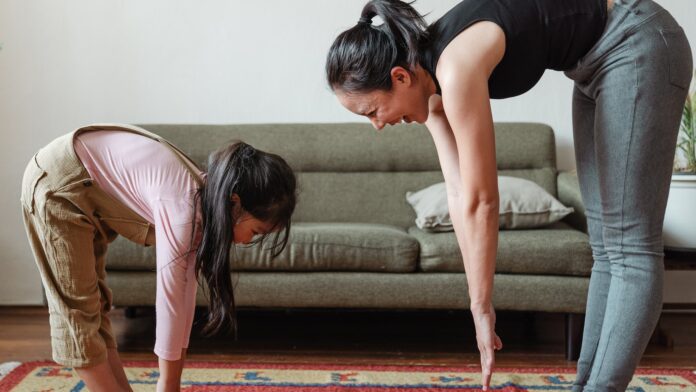The Hip Flexor is Predominantly a Calf Stretching Exercise.
As a seasoned fitness enthusiast, I’ve come to understand the importance of stretching. Among the various stretches, calf stretching stands out as a significant part of hip flexor exercises. It’s a common misconception that the hip flexor is only about the hip; it’s more than that. It’s also about the calves and how they contribute to the overall movement and flexibility of the body.
The hip flexor isn’t just one muscle; it’s a group of muscles that work together to bend the hip joint and allow for a range of movements. When we talk about hip flexor exercises, we’re referring to exercises that stretch and strengthen these muscles. And yes, calf stretching is a key part of this process.
When you stretch your calves, you’re indirectly working on your hip flexors. That’s because the muscles in your legs are all interconnected, working in harmony to facilitate movement. So, when you’re doing your calf stretches, remember, you’re not just working on your calves; you’re also giving your hip flexors a good workout.
What is the Hip Flexor?
In layman’s terms, the hip flexor is a group of muscles that enable your hip joints to bend. These muscles play a crucial role in allowing for a wide range of movements. They’re not just about hip movement; they’re also deeply interconnected with other lower body muscle groups.
You might be wondering, how does calf stretching come into the picture? Well, it’s quite simple. The theory of the hip flexor being predominantly a calf stretching exercise is based on the interconnectedness of these muscle groups.
When you stretch your calves, you’re also indirectly working your hip flexors. It’s like getting two benefits from one exercise – a stronger calf and a more flexible hip. So, the next time you’re working out, remember that calf stretching isn’t just beneficial for your calves. It’s also giving your hip flexors a good workout.
Through regular calf stretching, you can improve the flexibility of your hip flexors. This can lead to better mobility and potentially reduce the risk of injuries. So, don’t underestimate the power of a good calf stretch. It’s more beneficial than you might think.

The Role of the Hip Flexor in Calf Stretching
Let’s delve into how the hip flexor is predominantly a calf stretching exercise. When you’re engaging in calf stretching, it’s not just your calves that are getting a workout. Your hip flexors are also involved in this process.
Working on Hip Flexors
These muscles are responsible for enabling hip joints to bend. When your calves are stretched, your hip flexors are also indirectly worked upon. This leads to an improved flexibility, better mobility, and potentially reduced risk of injuries.
Interconnection of Lower Body Muscle Groups
The hip flexors are interconnected with other lower body muscle groups. So, by stretching your calves, you’re not only working on one set of muscles, but multiple. This makes calf stretching a powerful exercise, providing dual benefits for both your calves and hip flexors.
Hip Flexor Activation during Calf Stretching
During a calf stretch, the hip flexors are activated as they play a critical role in maintaining your posture and stability. They are essential for the bending of the hip joint, and when you stretch your calves, it indirectly leads to the stretching of the hip flexors too.
This underlines the fact that the hip flexor is predominantly a calf stretching exercise. A regular practice of calf stretching can lead to improved hip flexor flexibility, better lower body mobility, and a potentially reduced risk of injuries.
Anatomy of the Hip Flexor
When we talk about hip flexors, we’re not just talking about a single muscle. It’s actually a group of muscles that work together to flex the hip joint. This group includes major players like the iliopsoas muscle, which itself is made up of the psoas major and iliacus muscles. The rectus femoris muscle, part of the quadriceps group, also contributes to hip flexion.
These muscles are essential for many daily activities. They allow us to bend at the waist, lift our knees, and even walk. And while they’re not the biggest or most visible muscles in our bodies, they’re among the most important.
Let’s circle back to calf stretching. You might be wondering, “What does this have to do with the hip flexors?” Well, the connection between calf stretching and the hip flexors is indirect but significant. When you stretch your calves, you’re also stretching your Achilles tendons. This, in turn, impacts the muscles and tendons in your hips. It’s a kind of ripple effect.
That’s why the hip flexor is predominantly a calf stretching exercise. The hip flexors are interconnected with other lower body muscle groups, making calf stretching a powerful way to improve flexibility, mobility, and potentially reduce the risk of injuries.
So, it’s not just about stretching those calves. It’s about the larger picture of full-body mobility and flexibility. This understanding underscores the importance of incorporating comprehensive stretching routines into our fitness regimen. Not only for the health and strength of our muscles but for overall wellness and injury prevention.
The hip flexor’s complex anatomy, its essential role in daily movements, and its indirect relationship with calf stretching, make it a fascinating area of study for anyone interested in fitness and exercise science.
Common Calf Stretching Exercises
Incorporating calf stretches into your daily routine isn’t just beneficial for your calves, but also for your hip flexors. That’s because the hip flexor is predominantly a calf stretching exercise. Here are three common calf stretching exercises that indirectly work the hip flexors:
- Standing Calf Stretch: This is a simple exercise that can be done anywhere. Stand arms’ length from a wall, place your right foot behind your left foot. Slowly bend your left leg forward, keeping your right knee straight and your right heel on the ground. Hold this position for about 15 to 30 seconds, then switch legs.
- Seated Calf Stretch: For this exercise, sit on the floor with your legs stretched out in front of you. Wrap a towel around the ball of one foot and pull the towel towards you, keeping the leg straight. Hold for 15 to 30 seconds, and then switch legs.
- Downward Dog: This yoga pose is great for stretching the calves and hip flexors. Start on your hands and knees, then lift your knees off the floor, pushing your hips up and back. Try to keep your heels on the ground and hold for 15 to 30 seconds.
Remember, while these exercises target the calves, the interconnected nature of muscles means that they also work the hip flexors. So next time you’re stretching your calves, remember you’re also improving the flexibility and strength of your hip flexors. And that’s a win-win for overall fitness and injury prevention.
It’s clear that calf stretching goes beyond just benefiting the calves. It’s an effective way to indirectly work those hip flexors, thanks to the interconnectedness of our lower body muscle groups. With improved flexibility and mobility, you’re also minimizing your risk of injuries. So, why not make calf stretches part of your daily routine? Standing calf stretches, seated calf stretches, and the downward dog pose are all fantastic options. They’ll not only improve the flexibility and strength of your hip flexors but also promote overall fitness and injury prevention. Remember, a healthy body is a happy body, and a simple calf stretch could be the key to unlocking your fitness potential.


